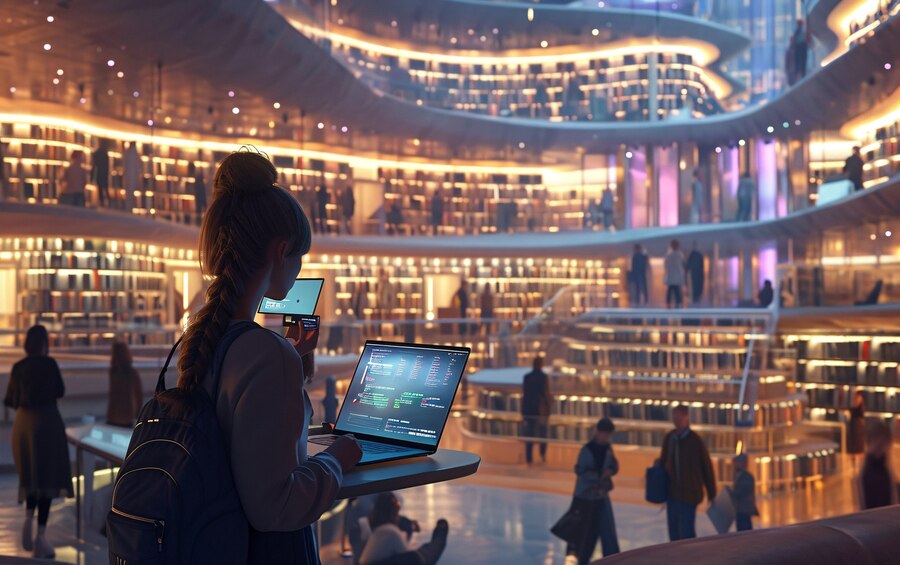In the dynamic and ever-evolving landscape of global business, the Meetings, Incentives, Conferences, and Exhibitions (MICE) sector stands as a crucial pillar for facilitating networking, knowledge sharing, and corporate growth.
The MICE industry, like many others, has been profoundly impacted by technological advancements, shifting societal norms, and the global pandemic.
As we look toward the future, several innovative trends are emerging, poised to reshape the way international MICE events are conceptualized, organized, and executed.
This article delves into these transformative trends, offering a comprehensive understanding of their implications for the industry.
Virtual and Hybrid Events
One of the most significant shifts in the MICE industry is the rise of virtual and hybrid events. The COVID-19 pandemic accelerated the adoption of digital platforms, allowing events to continue despite travel restrictions and social distancing measures.
Virtual events, hosted entirely online, and hybrid events, combining in-person and virtual elements, have become mainstream.
Hybrid events, on the other hand, offer the best of both worlds. They allow a portion of the audience to attend in person while others participate online.
This model not only expands reach but also offers flexibility and inclusivity, accommodating those who may have travel constraints or health concerns.
As technology continues to evolve, we can expect virtual and hybrid events to become more sophisticated, with enhanced interactivity and personalization.
Immersive Technologies
Immersive technologies such as Virtual Reality (VR), Augmented Reality (AR), and Mixed Reality (MR) are transforming the attendee experience at MICE events.
These technologies offer innovative ways to engage audiences, provide interactive content, and create memorable experiences.
VR can transport attendees to virtual environments, allowing them to explore digital spaces, participate in simulated activities, or attend virtual tours.
AR enhances the real-world environment by overlaying digital information, providing interactive and informative experiences.
MR combines elements of both VR and AR, creating hybrid environments where physical and digital elements coexist.
These technologies are being used for various applications, including virtual exhibitions, product demonstrations, training sessions, and gamified experiences.
As immersive technologies continue to advance, they will offer even more creative possibilities for event organizers to captivate and engage their audiences.
Personalization and Customization
Personalization is becoming a key trend in the MICE industry, driven by the desire to create unique and meaningful experiences for attendees.
Advances in technology and data analytics enable organizers to tailor events to individual preferences and interests.
From personalized agendas and content recommendations to customized networking opportunities, attendees can enjoy a more relevant and engaging experience.
AI-driven algorithms can analyze attendee profiles and behavior to suggest sessions, speakers, and activities that align with their interests.
Customization extends to event design and branding, allowing organizers to create bespoke experiences that reflect the identity and values of the hosting organization.
Personalized marketing campaigns, interactive event apps, and bespoke swag bags are some of the ways personalization is being incorporated into MICE events.
Gamification and Engagement
Gamification is emerging as a powerful tool to boost engagement and enhance the attendee experience at MICE events.
By incorporating game-like elements such as challenges, rewards, and leaderboards, organizers can create a more interactive and enjoyable experience.
Gamification can be applied to various aspects of events, including registration, networking, education sessions, and exhibitor interactions.
For example, attendees can earn points for participating in sessions, visiting exhibitor booths, or engaging in networking activities. These points can be redeemed for prizes, creating a sense of achievement and motivation.
Interactive event apps and platforms facilitate gamification by providing real-time updates, tracking progress, and enabling social sharing.
This not only increases engagement but also fosters a sense of community and friendly competition among attendees.
Enhanced Networking Opportunities
Networking is a fundamental aspect of MICE events, and innovative approaches are being developed to enhance these opportunities.
Technology is playing a crucial role in facilitating connections and interactions among attendees.
Event apps and platforms with AI-driven matchmaking algorithms can suggest relevant contacts based on attendees’ profiles and interests.
Virtual networking lounges, video calls, and chat features enable participants to connect and interact in real-time.
Flexible and Adaptable Event Models
Flexibility and adaptability are becoming essential attributes for the future of MICE events. The unpredictable nature of global events, such as the COVID-19 pandemic, has highlighted the need for contingency planning and agile event models.
Organizers are adopting flexible approaches to event planning, allowing for quick adjustments in response to changing circumstances.
Hybrid and virtual models offer the flexibility to switch between in-person and online formats, ensuring continuity regardless of external factors.
Augmented Networking Platforms
Augmented networking platforms are revolutionizing the way attendees connect and interact at MICE events.
These platforms leverage AI and machine learning to enhance networking opportunities, providing personalized recommendations and facilitating meaningful connections.
Attendees can create detailed profiles, highlighting their interests, expertise, and objectives. The platform’s algorithms analyze this data to suggest relevant contacts, sessions, and activities.
Real-time messaging, video calls, and interactive features enable seamless communication and collaboration.
Advanced Event Marketing Strategies
Marketing strategies for MICE events are evolving to leverage advanced technologies and data-driven insights.
Personalized and targeted marketing campaigns are becoming more prevalent, aiming to attract the right audience and maximize
Social media platforms, email marketing, and influencer partnerships are being used to promote events and generate buzz.
AI-driven tools can analyze audience data to create tailored content and advertisements, increasing the effectiveness of marketing efforts.
The Future of MICE Events: Embracing Change and Innovation
The future of international MICE events is being shaped by a multitude of innovative trends and advancements. As the industry continues to evolve, embracing change and innovation will be key to staying relevant and competitive.
Event organizers, venues, and stakeholders must be agile and forward-thinking, leveraging new technologies and strategies to create meaningful and impactful experiences.
Sustainability, personalization, and engagement will remain at the forefront, driving the design and execution of successful events.
Conclusion
The MICE industry stands on the brink of a transformative era, driven by technological advancements, changing societal norms, and the need for flexibility and sustainability.
Virtual and hybrid events, AI and data analytics, immersive technologies, and personalized experiences are just some of the trends reshaping the landscape.
As we move forward, the ability to adapt and innovate will be crucial for creating impactful and successful MICE events that meet the evolving needs of a global audience.


